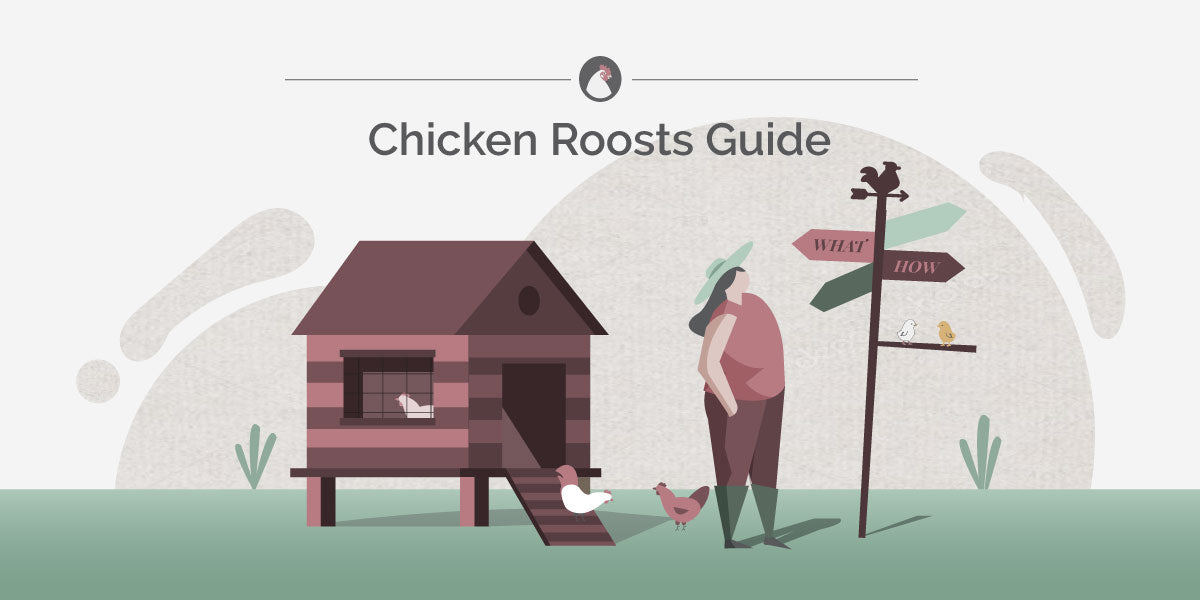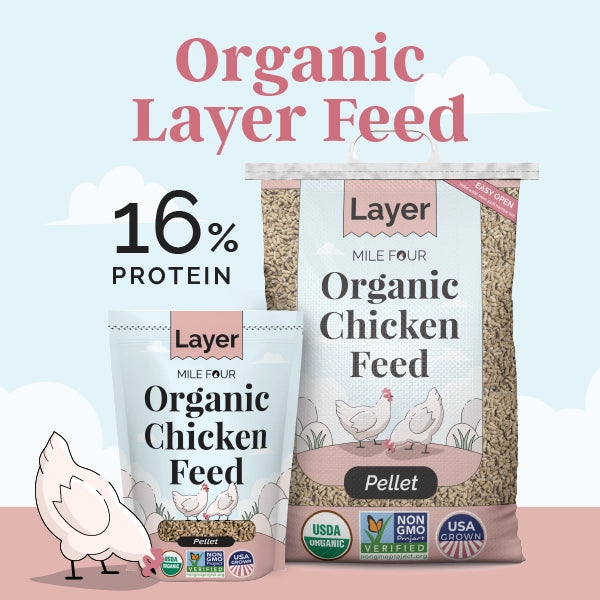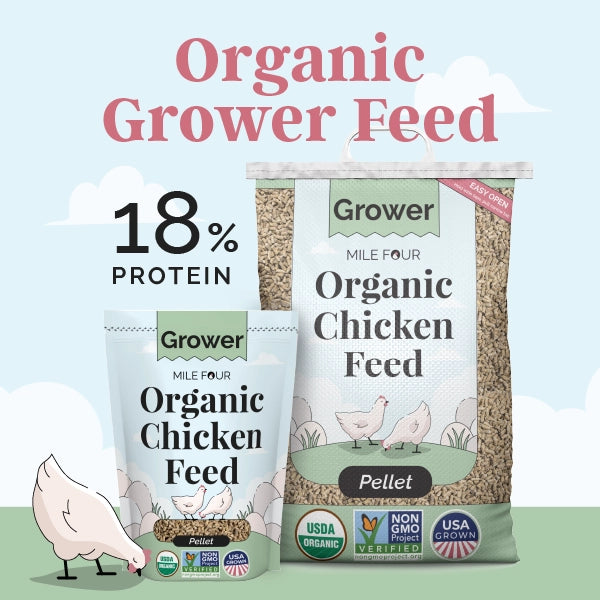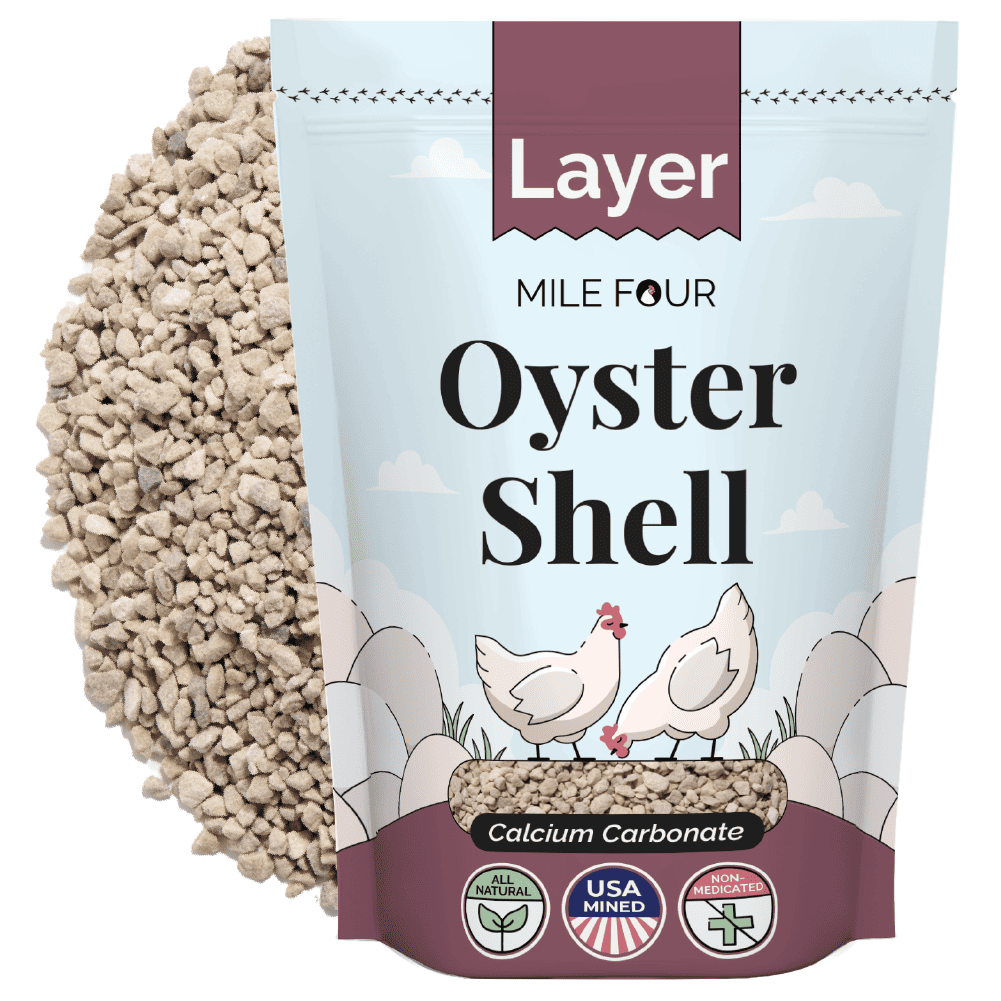A roost for your chickens is a long bar of any length that is raised up from the ground. Your ladies will naturally seek them very early on for a variety of reasons.
They will use them to
-
Avoid predators
-
Nap
-
Relax
-
Get away for a bit if another chicken in the flock is annoying them.
It’s also where they’ll spend their night huddled up together (especially in colder weather).
Depending on the size of your flock, you may want to have more than one roosting perch at more than one height because of the “pecking order,” but we’ll get into that later on in this article!
Chicken Roost Ideas
Because chickens will instinctively find a roosting perch, you can get quite creative with your DIY skills to make one. As long as the “bar” is thick enough to hold a number of chickens, they won’t be too snooty about it.
A yard with trees is the perfect starting point as you can grab a long branch from one of them and set it up in the coop.
You’ll want to make sure any roosting perch is sturdy and set up correctly, so securing it to the coop whichever way you see fit is your best bet.
The best way to do this is to select a branch that’s too long and cut it down to size. Then you’ll easily be able to affix it to the coop on either side or an extra piece of wood that will hold it in place.
Another cool DIY idea would be to use a wooden fence panel you no longer have use for. You can simply lean one up against the inner wall of the coop and your chickens will be able to hop up onto whichever panel they prefer. You can do the same with an old wooden ladder too!
Height is key with roosting perches, so as long as your perches sit between one foot and three feet off the ground, you shouldn’t have any problems.
Larger chickens will roost at the top, while smaller chickens will roost at the bottom.
If you’re struggling with creativity, grabbing a few 2x4’s will do the trick too, and these simple perches also give your ladies the opportunity to sit. You’ll just want to make sure you clean these more often than a rounded perch because they’ll likely get dirtier considering there’s more surface area for your chickens to make a mess on.
Chicken Roosts Placement
The best place for a roosting perch is right outside your ladies’ nesting boxes. If they’re not spending the night on the perch itself, they’ll be sleeping in their nesting box. As soon as they wake up they’ll want a place to hop to and they’re likely going to want that to be a roosting perch.
Having your perch set up right outside the nesting boxes is a sure-fire way to make your chickens happy, and they might even thank you for it with better eggs if all their needs are met.
You will, however, want to make sure that your chickens don't start sleeping in their nesting boxes, as you'll have to clean them much more often than if not.
If you want to learn more about nesting boxes, check out our Chicken Nesting Boxes Guide here!
Chicken Pecking Order
Ever wondered where the term “Pecking Order” came from?
Well, it has to do with how chickens perch in their coop!
Your “top hens” or the ones higher in the pecking order will hang out on the higher perch, and will generally be right in the middle of it too.
Lower-ranking hens will find themselves on the outsides of the perches and lower down too if you have multiple perches at different heights.
If your chickens vary in size and weight, you’ll want to build a few different perches at different heights (starting at 1ft up to 3ft) to minimize injury. Some heavier birds will perch lower so they don’t damage their feet when they hop off the perch.
You won’t need to pay too much attention to the pecking order of your flock, but if you notice a smaller bird perching higher than she probably should, it might be time to lower your perches closer to the ground.
The pecking order of your chickens doesn’t only apply to their perches, however. It will also apply to eating, drinking, and bathing.
The pecking order determines who gets to do all of these things first, and it’ll be your “top bird” that does it.
As long as you’re not consistently introducing new chickens to your flock, you shouldn’t have any issues other than minor tiffs, but in a backyard flock that sees a lot of turnover, you may need to manage this a bit more hands-on.
The best way to do this without upsetting the apple cart is to have a separate area for new chickens to hang out in while they get used to their new home, similar to if one of your broody hens hatches a number of chicks.
After a few days, you can fully introduce them to the gang, but be sure to monitor them closely. Fights between chickens can be deadly so you’ll want to ensure everybody is getting along to the best of their abilities.
Now that you've read this article, you should be set up to go with building and implementing your chicken roosts.
If you have any tips or tricks, comment below.
Additional Resources:
Here is a helpful article from the Raising Happy Chickens blog.
An informative article from The Happy Chicken Coop




![Winter Chicken Care | Ultimate Guide [2026]](http://milefour.com/cdn/shop/articles/Mile_Four-Content-15_e1067340-1a72-4632-83f5-c66d9a2158d9.png?v=1767031296&width=1500)




